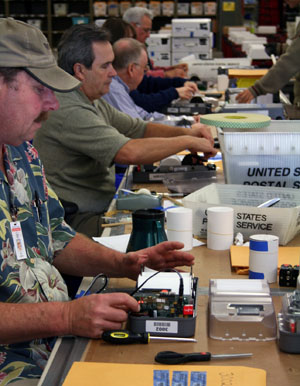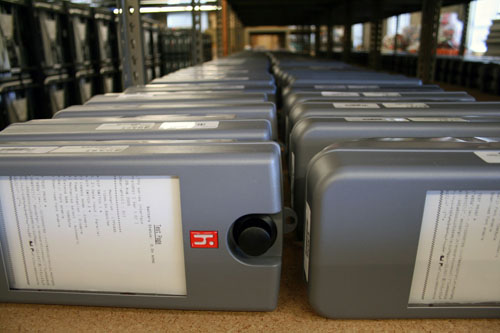There has been much chatter in the news yesterday and today about the now-verifiable record turnout in California for the Feb. 5 Presidential Primary.
The numbers are all part of the California Secretary of State’s Statement of the Vote for the Feb. 5 Presidential Primary Election, a meta compilation of certified results from each of California’s 58 counties. It includes results from our Statement of the Vote issued on March 4.
Nearly 9.1 million votes were cast on Feb. 5, representing an unusually high turnout of nearly 58 percent. When you look at the numbers over time, that’s the highest turnout for a primary since 1980. But it’s by no means a record, as turnout was nearly 73 percent in June 1976.
Similar to what we saw in San Mateo County, it was the highest statewide turnout for a primary this century. As the Sacramento Bee noted, this election garnered about 1.2 million more votes than the presidential primary in 2000, which held the previous primary record for absolute number of voters.
The statement breaks how presidential candidate votes were cast by county and congressional district. You’ll note that San Mateo County voted 44.5 percent for U.S. Sen. Barack Obama, D-Ill., 50.9 percent for U.S. Sen. Hillary Clinton, D-N.Y., and 51.1 percent for U.S. Sen. John McCain, R-Ariz.
There are couple of other interesting trends – for better or for worse – that the numbers further reveal that we think are worth pointing out.

 And you thought
And you thought  Well, we have some opening of the mouth and inserting of the foot to do.
Well, we have some opening of the mouth and inserting of the foot to do. We’ve been spending these last couple of days tying up loose ends from February and completing some preliminary steps before we really get into the heart of preparations for the
We’ve been spending these last couple of days tying up loose ends from February and completing some preliminary steps before we really get into the heart of preparations for the 
 Speaking of ballots, a reminder that, as an open primary, all candidates will appear on the same ballot. Voters can vote for whomever they choose, regardless of political party affiliation. If a single candidate receives a majority of the vote (50 percent plus one), then that candidate is declared the winner and no general election is necessary. If no candidate receives a majority of the vote, Speier and the top vote-getter from the Republican party will be placed on the ballot for a special congressional general election, which will be held on June 3 in conjunction with the Statewide Direct Primary Election. Read more about how the special congressional election works in our
Speaking of ballots, a reminder that, as an open primary, all candidates will appear on the same ballot. Voters can vote for whomever they choose, regardless of political party affiliation. If a single candidate receives a majority of the vote (50 percent plus one), then that candidate is declared the winner and no general election is necessary. If no candidate receives a majority of the vote, Speier and the top vote-getter from the Republican party will be placed on the ballot for a special congressional general election, which will be held on June 3 in conjunction with the Statewide Direct Primary Election. Read more about how the special congressional election works in our  This is a novelty for California, and one we believe has the potential to save taxpayers money and increase voter turnout for this one-time, district-specific race.
This is a novelty for California, and one we believe has the potential to save taxpayers money and increase voter turnout for this one-time, district-specific race.